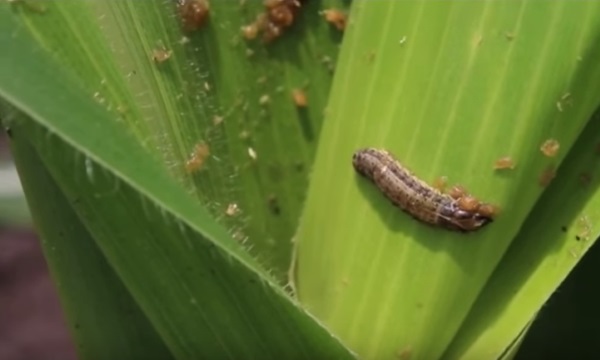The Ministry of Agriculture and Animal Husbandry has started a project to eradicate the fall armyworm which has ravaged thousands of acres of crops in the country since 2016. The project will rely on traps to give farmers an early warning of the presence of the moth that produces the armyworm. The farmers will then take steps to destroy these moths before they can produce the lava that feeds on their crops. “Those traps will be placed in the field very early even before the emergence of the maize crop.” Said, Mathew Abang – Crop Production Officer, FAO.
The Commissioner of Crop Protection in the Ministry of Agriculture Steven Byantwale said the project will be community-based. “So what we have learned is that for it being a migratory pest, the first key principle aspect is early detection. How do we do the early detection? Early detection since it is a migratory pest, we are adopting a method of using what they have shown you the funnel fellow phenome traps.” Said, Steven Byantwale – Commissioner Crop Protection, MAAIF. Uganda first recorded the fall armyworm in June 2016 in 3 districts and by March 2017, it had spread to 115 districts with the worst affected region being Karamoja. The worm mostly attacked crops like maize and led to the poor harvest in early 2017 Which subsequently led to the issues of food security and loss of revenue for many around the country. “In addition, to those following up you know the challenges we are going through with our horticultural exports to the EU market and to other markets. And the key challenges you know are harmful organisms.” “Maybe we can learn from FL, whether it capable of supplying us with more phenome traps.”
Last year, at least 600,000 tons of maize were lost. But the government in partnership with the world bank have so far availed with 6.7 billion Ugandan shillings to fight the armyworm under vast similar loses this year. Michael Otim, a Senior Researcher with the National Agricultural Research Organization said trials using disease-causing organisms and other insects to kill off the fall armyworm are also showing promising results. “We suspect we have what we call Metarisham and Buvelia. Those are the disease-causing organisms that we found in fall armyworm. And then the unisex we have others belonging to the group of wasps, we have also identified some flies and we have identified a nematode that does attack the fall armyworm.” Said, Michael Otim – Senior Researcher, NARO. The more persistent the drought is, the more severe crop yields can be devastated by the fall armyworms. The effort now is to introduce an early warning system for farmers to detect the armyworm before it spreads.

